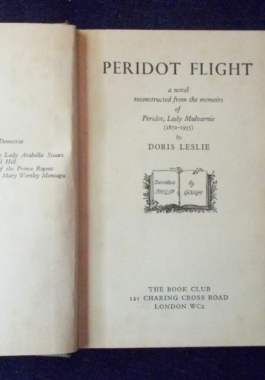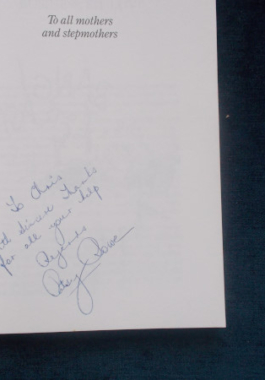Beginning in Victoria's England of the 1880s, the teenaged Peridot learns that Mr Cheke, the chemist, is not her real father. When he dies, she begins to make her own way in the world and searches for traces of her mother, who died not long after she was born. She becomes a paid companion to Geraldine, a temperamental and wealthy young invalid girl who is under the guardianship of her debonair bachelor uncle, Adrian Hope-Winter. When Adrian proposes marriage, Peridot accepts, never dreaming that she will become a star player in a celebrated and scandalous divorce case or that she will become a pioneer for women entering the workforce. Rich with very visible and real characters and an accurate portrayal of life in the Victorian Age. With charming end-chapter illustrations by Philip Gough.
- Sorry, this product is unavailable.
-
 An A-Z of eccentrics and eccentricities for teenagers. Featuring: the artist who exhibited an exploding bull; the Russian admiral who invented the circular battleship; the Duchess who rode through London in a boat on wheels; the Marquis who erected a tombstone to his leg and many more. A real collection of eccentrics, nutters, enthusiasts and ideas-people - and all crazy in the best possible way.
An A-Z of eccentrics and eccentricities for teenagers. Featuring: the artist who exhibited an exploding bull; the Russian admiral who invented the circular battleship; the Duchess who rode through London in a boat on wheels; the Marquis who erected a tombstone to his leg and many more. A real collection of eccentrics, nutters, enthusiasts and ideas-people - and all crazy in the best possible way. -

 A very thorough work which - in this edition - also covers the years since Federation. Contents: The First Visitors; The Penal Settlement; The Colony Expands; The Days of Bourke; The Daughter Colonies; The Coming Of Self-Government; New Zealand In The Early Days; New Zealand 139-1851; The Gold Discoveries And Their Results; Filling In The Map; Constitutional Government; New Zealand Since 1850; Australiasia; Australian Literature: this chapter covers such luminaries as Henry Kendall, Marcus Clarke; A.B. 'Banjo' Paterson, Henry Lawson and Adam Lindsay Gordon, among others. A must for any sincere history buff. With fine colour maps, numerous black and white illustrations and useful margin notations for quick reference.
A very thorough work which - in this edition - also covers the years since Federation. Contents: The First Visitors; The Penal Settlement; The Colony Expands; The Days of Bourke; The Daughter Colonies; The Coming Of Self-Government; New Zealand In The Early Days; New Zealand 139-1851; The Gold Discoveries And Their Results; Filling In The Map; Constitutional Government; New Zealand Since 1850; Australiasia; Australian Literature: this chapter covers such luminaries as Henry Kendall, Marcus Clarke; A.B. 'Banjo' Paterson, Henry Lawson and Adam Lindsay Gordon, among others. A must for any sincere history buff. With fine colour maps, numerous black and white illustrations and useful margin notations for quick reference. -
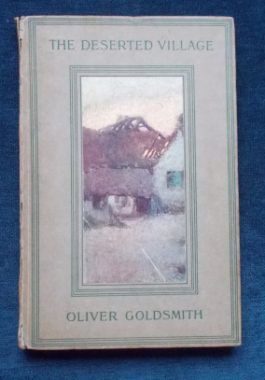 First published in 1770, this is a critique of rural depopulation and the pursuit of excessive wealth, describing the decline of a village and the emigration of many of its residents to America. Goldsmith covers the moral corruption found in towns, consumerism, enclosure, landscape gardening and the avarice of the wealthy who take the land for their own pleasures and business whilst the poor who worked the land and lived off the land must go to pastures new. Illustrations by W. Lee Hankey.
First published in 1770, this is a critique of rural depopulation and the pursuit of excessive wealth, describing the decline of a village and the emigration of many of its residents to America. Goldsmith covers the moral corruption found in towns, consumerism, enclosure, landscape gardening and the avarice of the wealthy who take the land for their own pleasures and business whilst the poor who worked the land and lived off the land must go to pastures new. Illustrations by W. Lee Hankey. -
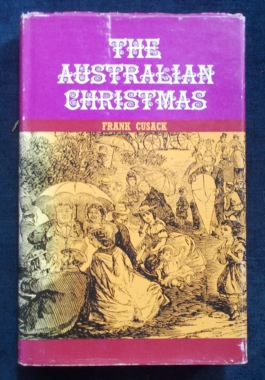 A literary Christmas Stocking of how Christmas is spent in the Land Down Under. The collection covers our early days: An entry from Banks' journal, 1769; an 1836 Christmas Day service conducted in a rush hut; Christmas letters and poems, sent to England with more than a touch of homesickness about them; Christmas Day in the Victorian goldfields of 1857; the Holy Day with the Rudds, on their selection; Melbourne's Father Christmas of 1890; an all-Australian Christmas Dinner, from cocktails to crackers in 1925...there's even a recipe for Kosciusko Christmas Cake. Contributors include luminaries such as Henry Lawson, Dymphna Cusack, Elizabeth George, Marcus Clarke, Mary Grant Bruce, Xavier Herbert, Tasma and more. Illustrated.
A literary Christmas Stocking of how Christmas is spent in the Land Down Under. The collection covers our early days: An entry from Banks' journal, 1769; an 1836 Christmas Day service conducted in a rush hut; Christmas letters and poems, sent to England with more than a touch of homesickness about them; Christmas Day in the Victorian goldfields of 1857; the Holy Day with the Rudds, on their selection; Melbourne's Father Christmas of 1890; an all-Australian Christmas Dinner, from cocktails to crackers in 1925...there's even a recipe for Kosciusko Christmas Cake. Contributors include luminaries such as Henry Lawson, Dymphna Cusack, Elizabeth George, Marcus Clarke, Mary Grant Bruce, Xavier Herbert, Tasma and more. Illustrated. -
 TV Script writer Larry Baker is hired to pen a new horror series. On location at an old castle he crashes through walls with the ease of Superman - and somehow usually lands plunk in the middle of a lovely lady's bed. But Larry isn;t really a sex maniac. Not quite. Even though the black-haired babe calls him seducer and the gamin-type blonde screams bloody murder... When you're up against real live vampires, disappearing corpses, things that go bump in the night... plus a couple of gorgeously undressed gals guaranteed to drive you up the wall - something's got to give - and it does - with plenty of happy horrible hilarity...
TV Script writer Larry Baker is hired to pen a new horror series. On location at an old castle he crashes through walls with the ease of Superman - and somehow usually lands plunk in the middle of a lovely lady's bed. But Larry isn;t really a sex maniac. Not quite. Even though the black-haired babe calls him seducer and the gamin-type blonde screams bloody murder... When you're up against real live vampires, disappearing corpses, things that go bump in the night... plus a couple of gorgeously undressed gals guaranteed to drive you up the wall - something's got to give - and it does - with plenty of happy horrible hilarity... -
 Quite a rollicking tale of corrupt soldiers and starving convicts, set in a South Pacific penal colony in 1790. Into this alien world comes Corporal Phelim Halloran: Innocent and lover, poet and scholar and soldier-by-accident who attempts to make a world for himself in this non-conducive setting. First published in 1967.
Quite a rollicking tale of corrupt soldiers and starving convicts, set in a South Pacific penal colony in 1790. Into this alien world comes Corporal Phelim Halloran: Innocent and lover, poet and scholar and soldier-by-accident who attempts to make a world for himself in this non-conducive setting. First published in 1967. -
 Written in 1913, this hefty novel commences: "I was an unwanted child - unwanted as a girl at all events. Father Dan Donovan, our parish priest, has told me all about it. I was born in October. It had been raining heavily all day long. The rain was beating hard against the front of our house and running in rivers down the window panes. Towards four in the afternoon the wind rose and then the yellow leaves of the chestnuts in the long drive rustled noisily, and the sea, which is a mile away, moaned like a dog in pain." Mary O'Neill, unwanted by her wealthy father for not being a boy, is married off to an impoverished - yet titled - man. Mary is determined to try and love her husband - she may yet please her father - but then she meets a real gentleman, in every sense of the word, and is torn between her true feelings, duty and her marriage vows.
Written in 1913, this hefty novel commences: "I was an unwanted child - unwanted as a girl at all events. Father Dan Donovan, our parish priest, has told me all about it. I was born in October. It had been raining heavily all day long. The rain was beating hard against the front of our house and running in rivers down the window panes. Towards four in the afternoon the wind rose and then the yellow leaves of the chestnuts in the long drive rustled noisily, and the sea, which is a mile away, moaned like a dog in pain." Mary O'Neill, unwanted by her wealthy father for not being a boy, is married off to an impoverished - yet titled - man. Mary is determined to try and love her husband - she may yet please her father - but then she meets a real gentleman, in every sense of the word, and is torn between her true feelings, duty and her marriage vows. -
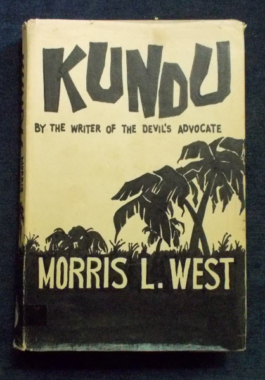
Kundu: Morris L. West
$30.00Set in the Highland valleys of New Guinea, a white man meddles with the age-old mysteries of the native tribes. There is Kumo, the sorcerer, jealous of the white man's power; Kurt Sonderfield, owner of a coffee plantation; Gerda, his wife - and the men who love her - and N'Daria, the sensual native girl who shares the worlds of Kumo and Sonderfield. -
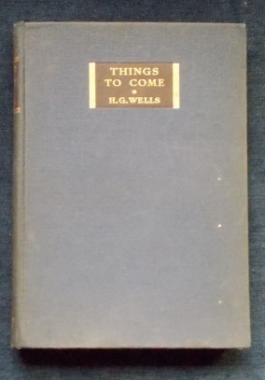
Things To Come: H.G. Wells
$20.00Wells' own novelisation of the 1935 film inspired by The Shape of Things To Come. When Dr Philip Raven, an intellectual working for the League of Nations, dies in 1930 he leaves behind a powerful legacy - an unpublished 'dream book'. Inspired by visions he has experienced for many years, it appears to be a book written far into the future: a history of humanity from the date of his death up to 2105. The Shape Of Things To Come provides this history of the future, an account that was in some ways remarkably prescient - predicting climatic disaster and sweeping cultural changes, the Second World War, the rise of chemical warfare and political instabilities in the Middle East. -
 The team behind the The Book of General Ignorance turns conventional biography on its head. Following their Herculean - or is it Sisyphean?- efforts to save the living from ignorance, the two wittiest Johns in the English language turn their attention to the dead. As the authors themselves say, “The first thing that strikes you about the Dead is just how many of them there are.” Helpfully, Lloyd and Mitchinson have employed a simple but ruthless criterion for inclusion: the dead person has to be interesting. Here, then, is a dictionary of the dead, an encyclopedia of the embalmed. Ludicrous in scope, whimsical in its arrangement, this wildly entertaining tome presents pithy and provocative biographies of the no-longer-living from the famous to the undeservedly and - until now - permanently obscure. Spades in hand, Lloyd and Mitchinson have dug up everything embarrassing, fascinating and downright weird about their subjects’ lives and added their own uniquely irreverent observations. Organized by capricious categories such as dead people who died virgins, who kept pet monkeys, who lost limbs, those whose corpses refused to stay put - the dearly departed, from the inventor of the stove to a cross-dressing, bear-baiting female gangster finally receive the epitaphs they truly deserve. Discover: Why Freud had a lifelong fear of trains; the one thing that really made Isaac Newton laugh; how Catherine the Great really died (no horse was involved) and much more.
The team behind the The Book of General Ignorance turns conventional biography on its head. Following their Herculean - or is it Sisyphean?- efforts to save the living from ignorance, the two wittiest Johns in the English language turn their attention to the dead. As the authors themselves say, “The first thing that strikes you about the Dead is just how many of them there are.” Helpfully, Lloyd and Mitchinson have employed a simple but ruthless criterion for inclusion: the dead person has to be interesting. Here, then, is a dictionary of the dead, an encyclopedia of the embalmed. Ludicrous in scope, whimsical in its arrangement, this wildly entertaining tome presents pithy and provocative biographies of the no-longer-living from the famous to the undeservedly and - until now - permanently obscure. Spades in hand, Lloyd and Mitchinson have dug up everything embarrassing, fascinating and downright weird about their subjects’ lives and added their own uniquely irreverent observations. Organized by capricious categories such as dead people who died virgins, who kept pet monkeys, who lost limbs, those whose corpses refused to stay put - the dearly departed, from the inventor of the stove to a cross-dressing, bear-baiting female gangster finally receive the epitaphs they truly deserve. Discover: Why Freud had a lifelong fear of trains; the one thing that really made Isaac Newton laugh; how Catherine the Great really died (no horse was involved) and much more. -
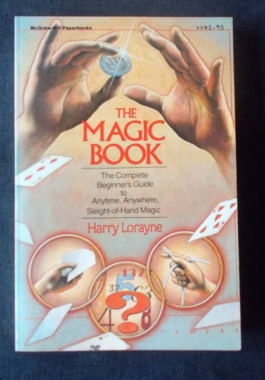 Reveals the secrets of the magicians, those techniques that are simple yet seem so complex. Here are the basic principles of magic using ordinary household items: a deck of cards, rubber bands and even a potato. You can learn to: control the order of cards through any number of shuffles; move a straw through a potato; make coins pass through a handkerchief; make knots evaporate; predicting the sum of a five-digit number and much, much more.
Reveals the secrets of the magicians, those techniques that are simple yet seem so complex. Here are the basic principles of magic using ordinary household items: a deck of cards, rubber bands and even a potato. You can learn to: control the order of cards through any number of shuffles; move a straw through a potato; make coins pass through a handkerchief; make knots evaporate; predicting the sum of a five-digit number and much, much more. -
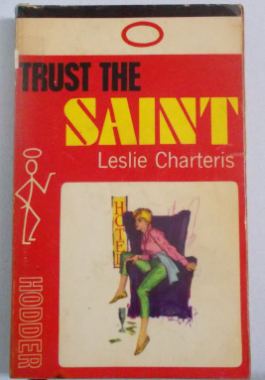 Six adventures with Simon Templar - The Saint. This volume includes: The Helpful Pirate; The Bigger Game; The Cleaner Cure; The Intemperate Reformer; The Uncured Ham; The Convenient Monster.
Six adventures with Simon Templar - The Saint. This volume includes: The Helpful Pirate; The Bigger Game; The Cleaner Cure; The Intemperate Reformer; The Uncured Ham; The Convenient Monster. -
 Here the greats of English seafaring - and probably a little pirating on the side - come to life through their letters. This volume includes letters from Drake to Queen Elizabeth; Hawkyns; Walsingham; Admiral Vernon; Nelson; Lord Howe;Captain Hardy and so many more. This is live history, as it happened.
Here the greats of English seafaring - and probably a little pirating on the side - come to life through their letters. This volume includes letters from Drake to Queen Elizabeth; Hawkyns; Walsingham; Admiral Vernon; Nelson; Lord Howe;Captain Hardy and so many more. This is live history, as it happened. -
 Erich von Daniken undertakes to prove that in prehistoric and early historic times the Earth was visited by unknown beings from the Cosmos; that these extra-terrestrials created human intelligence by a deliberate genetic mutation; that the extra-terrestrials ennobled hominids 'in their own image'; that these visitors to Earth were recorded and handed down in various religions, mythologies and popular legends; and that in some places, the extra-terrestrials left physical evidence of their presence on Earth. He draws his evidence from all over the world: from the Turkish mountains where carved monoliths and giant stone heads mysteriously survive the centuries; to the secret caves of Ecuador, where treasured remnants of a bygone era remain hidden; to equatorial Africa, where the 'primitive' Dogon have been familiar for centuries with the complex movements of Sirius, a star only discovered by western astronomers since the invention of the radio telescope. He searches the ancient documents of the Hindus, the Jews and the Christians; examines religions, mythologies and legends and fins a recurring theme of 'human' gods, heavenly chariots, 'space suits', floods and disasters. The evidence is largely circumstantial - but he challenges all comers to produce an interpretation that better fits the facts. Illustrated with black and white photographs.
Erich von Daniken undertakes to prove that in prehistoric and early historic times the Earth was visited by unknown beings from the Cosmos; that these extra-terrestrials created human intelligence by a deliberate genetic mutation; that the extra-terrestrials ennobled hominids 'in their own image'; that these visitors to Earth were recorded and handed down in various religions, mythologies and popular legends; and that in some places, the extra-terrestrials left physical evidence of their presence on Earth. He draws his evidence from all over the world: from the Turkish mountains where carved monoliths and giant stone heads mysteriously survive the centuries; to the secret caves of Ecuador, where treasured remnants of a bygone era remain hidden; to equatorial Africa, where the 'primitive' Dogon have been familiar for centuries with the complex movements of Sirius, a star only discovered by western astronomers since the invention of the radio telescope. He searches the ancient documents of the Hindus, the Jews and the Christians; examines religions, mythologies and legends and fins a recurring theme of 'human' gods, heavenly chariots, 'space suits', floods and disasters. The evidence is largely circumstantial - but he challenges all comers to produce an interpretation that better fits the facts. Illustrated with black and white photographs. -
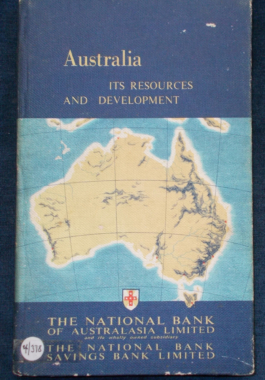 A real curio for history buffs and those who collect bank memorabilia. Remember when banks did give away all sorts of great things? Really good money boxes that you couldn't break into, and recordings of the Skippy theme song? The National Bank of Australasia Limited with its wholly-owned subsidiary the National Bank Savings Bank Limited offered this little volume covering all things resource and development: the Industrial Pattern of the rural, mineral, manufacturing and basic industries in each state making a special note of each state's particular strengths as well as Papua New Guinea; Water Resource, Transport and Power are also covered.
A real curio for history buffs and those who collect bank memorabilia. Remember when banks did give away all sorts of great things? Really good money boxes that you couldn't break into, and recordings of the Skippy theme song? The National Bank of Australasia Limited with its wholly-owned subsidiary the National Bank Savings Bank Limited offered this little volume covering all things resource and development: the Industrial Pattern of the rural, mineral, manufacturing and basic industries in each state making a special note of each state's particular strengths as well as Papua New Guinea; Water Resource, Transport and Power are also covered. -

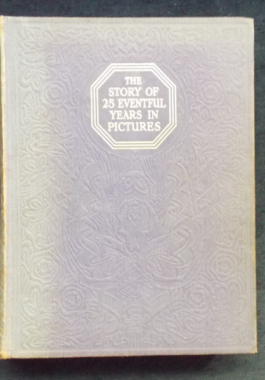 Those were eventful years for King George V and the world at large; the Great War that should have ended all wars was fought and won by the Allies; the motorcar took over the streets; the stock market rose and fell with a resounding crash; Viscountess Astor became the first woman MP in England; hemlines rose above the knee and plane travel became passè. A fabulous pictorial history of 25 years that really did change the world.
Those were eventful years for King George V and the world at large; the Great War that should have ended all wars was fought and won by the Allies; the motorcar took over the streets; the stock market rose and fell with a resounding crash; Viscountess Astor became the first woman MP in England; hemlines rose above the knee and plane travel became passè. A fabulous pictorial history of 25 years that really did change the world. -
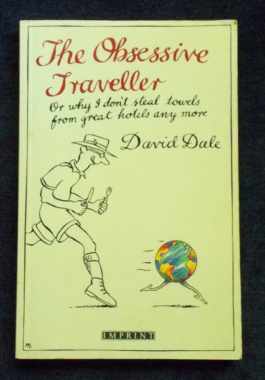
Or Why I Don't Steal Towels from Great Hotels Anymore. This is not a travel book, exactly, and it's not a book about hotels. It's a book about obsessions and the need to let our obsessions guide us to discoveries...Travel can be the supreme pleasure in life but only if we undertake an interior journey along with our exterior voyage.Among other topics, Dale covers: Why men want to read maps and women want to ask the way; how to stop a taxi driver from talking to you; where to find the guidebook that suits your personality; the how, what and why of souveniring from Great Hotels; whether you should be in love with your travelling companion; where to go star-spotting for dead celebrities; how to enjoy fake travel and pseudo nostalgia; the best and worst waiters, streets, train dining cars, restaurants and small museums in the world; and why shopping is a waste of good siesta time. With amusing sketches by Matthew Martin.
-
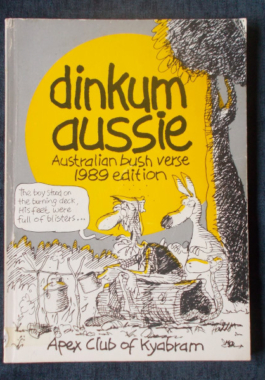 Includes such Aussie gems as: Picking Out the Melon Pips; The Bush Wedding; The Old Bark Hut; Ya' Stupid Galah!; Much Ado About a 'Roo; Anzac Day and many more unique true-blue poems. The Apex Club of Kyabram issued the first 'Dinkum Aussie Award' for Bush Verse in 1988 and were so pleased at the response, they went for it and 'had another go' in 1989. Who knows - some of the coves in here might be famous writers by now!
Includes such Aussie gems as: Picking Out the Melon Pips; The Bush Wedding; The Old Bark Hut; Ya' Stupid Galah!; Much Ado About a 'Roo; Anzac Day and many more unique true-blue poems. The Apex Club of Kyabram issued the first 'Dinkum Aussie Award' for Bush Verse in 1988 and were so pleased at the response, they went for it and 'had another go' in 1989. Who knows - some of the coves in here might be famous writers by now! -
 Australia is one of the richest countries, growing far more food that can be eaten, as well as a major source for minerals. To whom should Australia sell its food, minerals and energy? On what terms? How secure are Australia's relations with its major trading partners? How much does Australia's growth depend on immigration. These are just some of the themes covered in this book.
Australia is one of the richest countries, growing far more food that can be eaten, as well as a major source for minerals. To whom should Australia sell its food, minerals and energy? On what terms? How secure are Australia's relations with its major trading partners? How much does Australia's growth depend on immigration. These are just some of the themes covered in this book. -
 Two short stories: Little Brown House: The senator's wife - a life of receptions, dinners, social occasions and connections - can feel herself ever more distanced from her successful husband with every passing day. When she sees a little brown house for sale, she impulsively and secretly buys it and gives it to Annie, a homeless lady, who transforms it into a home of laughter, good food and a haven for mothers and children. Her kind act reveals a secret - about the senator. The Youngest Officer: Bruce, or 'Duny' as he likes to call himself, is only a little boy when his young mother dies. His father, a regimental officer, is heartbroken and the regimental wives take little Duny to their hearts. But when the regiment is shipped out, Duny must go and live with Great Aunt Lydia - a very different life. But he always remembers that his duty is to the regiment - and his endearing loyalty reveals a dark family secret.
Two short stories: Little Brown House: The senator's wife - a life of receptions, dinners, social occasions and connections - can feel herself ever more distanced from her successful husband with every passing day. When she sees a little brown house for sale, she impulsively and secretly buys it and gives it to Annie, a homeless lady, who transforms it into a home of laughter, good food and a haven for mothers and children. Her kind act reveals a secret - about the senator. The Youngest Officer: Bruce, or 'Duny' as he likes to call himself, is only a little boy when his young mother dies. His father, a regimental officer, is heartbroken and the regimental wives take little Duny to their hearts. But when the regiment is shipped out, Duny must go and live with Great Aunt Lydia - a very different life. But he always remembers that his duty is to the regiment - and his endearing loyalty reveals a dark family secret. -
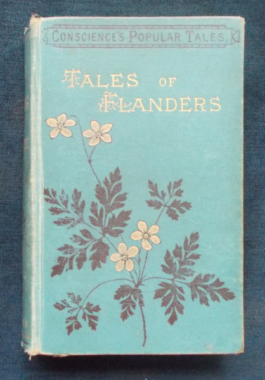 A tale set in 1336, of two brothers who are devoted to each other - until both become enamoured of the same lady. It comes down to a duel - which has far-reaching consequences over the ensuing years. First published in 1848.
A tale set in 1336, of two brothers who are devoted to each other - until both become enamoured of the same lady. It comes down to a duel - which has far-reaching consequences over the ensuing years. First published in 1848. -
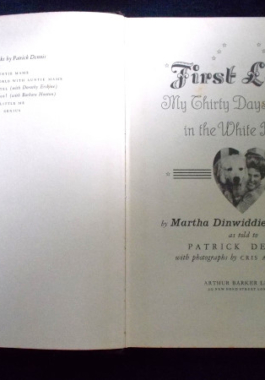 The hysterically funny inside story of the fictional Butterfield Administration of 30 days duration in 1909 as told by the 'First Lady', hostess of the Executive Mansion for that one month. Among other things, she details her rise from genteel poverty in the Deep South to sudden wealth, her romances, glamour and travels; and then to love, marriage and the ultimate address - the White House! Now a spry 94 years and a permanent 'guest' at the Boskey Dell Home for the Senile and Disturbed, Mrs Butterfield gives American political history a real shock treatment in this mock-memoir complete with photos.
The hysterically funny inside story of the fictional Butterfield Administration of 30 days duration in 1909 as told by the 'First Lady', hostess of the Executive Mansion for that one month. Among other things, she details her rise from genteel poverty in the Deep South to sudden wealth, her romances, glamour and travels; and then to love, marriage and the ultimate address - the White House! Now a spry 94 years and a permanent 'guest' at the Boskey Dell Home for the Senile and Disturbed, Mrs Butterfield gives American political history a real shock treatment in this mock-memoir complete with photos. -
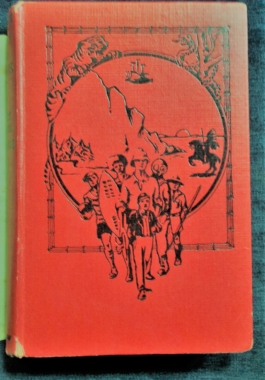
 A thrilling story of a strange caravan - a group of British colonists in the Raj travel in a wheeled house pulled by a steam-powered mechanical elephant in 1867 - that penetrates the Terai, the immense forest that stretches across India at the foot of the mighty Himalayas. In this forest wild men, wilder beasts and even more adventures are encountered in the aftermath of the Sepoy rebellion.
A thrilling story of a strange caravan - a group of British colonists in the Raj travel in a wheeled house pulled by a steam-powered mechanical elephant in 1867 - that penetrates the Terai, the immense forest that stretches across India at the foot of the mighty Himalayas. In this forest wild men, wilder beasts and even more adventures are encountered in the aftermath of the Sepoy rebellion.


